Your home is your most valuable material possession, but you shouldn't have to spend an arm and a leg to make it beautiful. It's easy investing interior pieces, but it’s hard to stomach the cost of hiring a designer if you’re on a tight budget.
Insight from interior designers can cost up to $500/hour-- or start at a multi-thousand dollar flat fee. These skilled men and women are keepers of trade secrets—some of which you won’t even see on HGTV. But we've picked a few experts' brains who generously provided some insider secrets that could save you hundreds in decorator fees.
1. Use your blind spots.
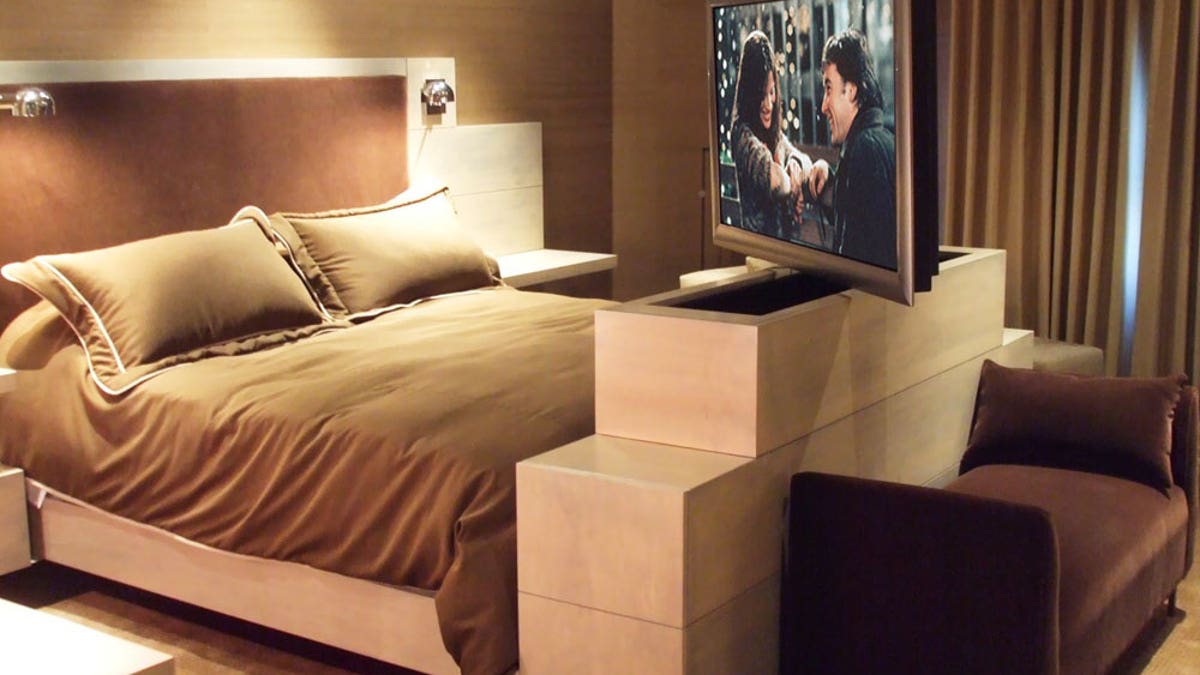
(TVLift.com)
Hide your least aesthetically pleasing pieces in plain sight by placing them in blind spots. To find a room’s blind spots, stand in the doorway that leads into the room and notice which parts of the room are harder to see from the doorway without craning your neck. These areas are perfect for electronics, storage, cluttered workspaces, and exercise equipment. – Amy Bell, owner of Red Chair Home Interiors
This elegant unit from TVLift.com beautifully hides electronics.
2. Keep a chic kitchen counter.
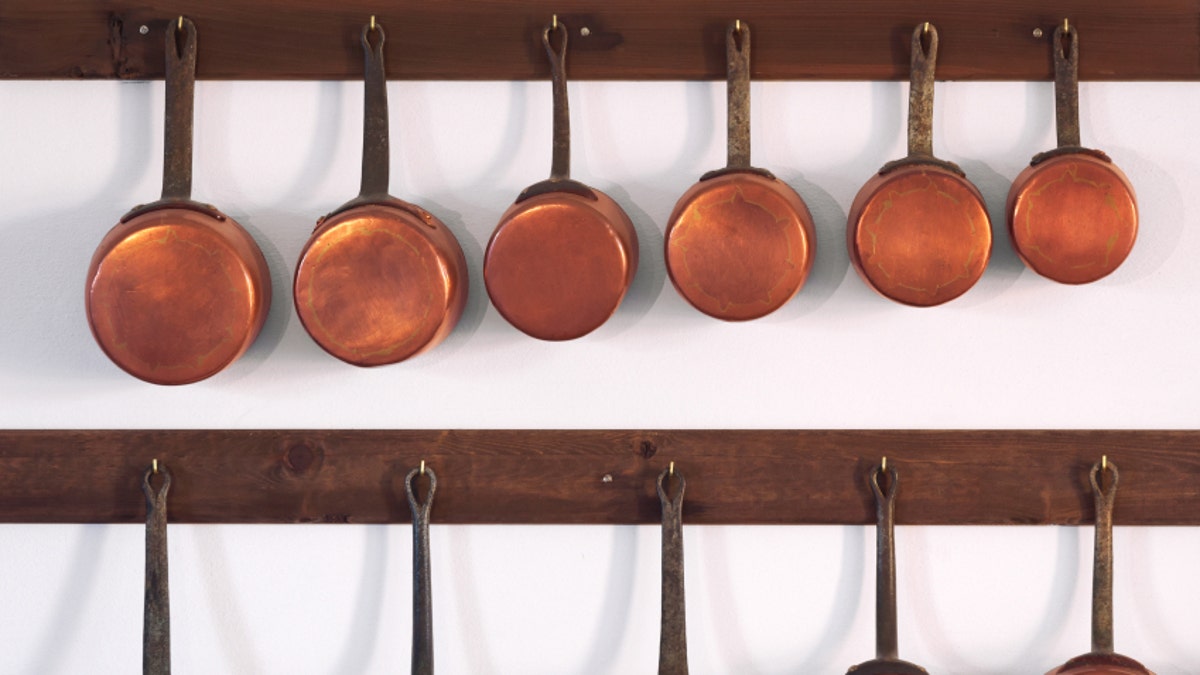
(iStock)
Your kitchen counter is all about function, but that doesn’t mean it has to look cluttered. Hanging a standout set of stainless steel and copper cookware or investing in countertop prep equipment with interesting metallic finishes can serve an epicurean purpose and be eye-pleasing at the same time. – Darrell Long, Partner at Hirsch Bedner Associates
3. Curves are communal.
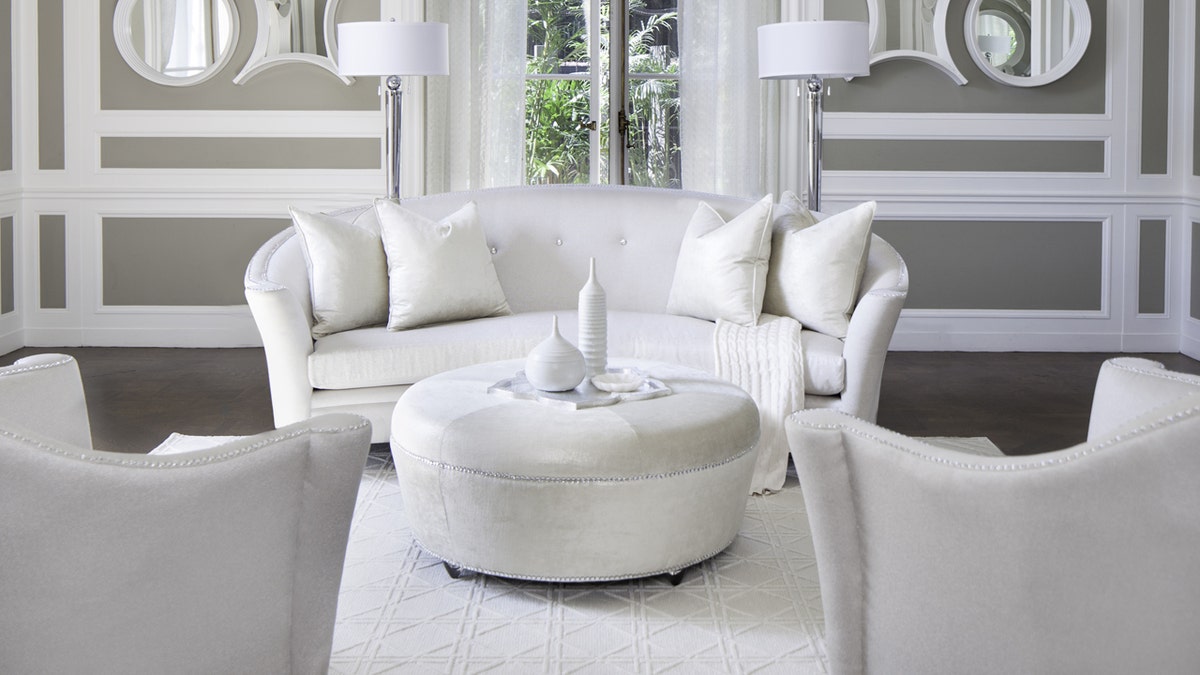
(Bel Air Park Collection by Michael Amini.j)
Curved lines open a space in a way that straight edges can’t. This allows for a cozier vibe more conducive to conversation. For example, campfires are round which is why it’s so natural to come together around them. Furniture with curves extend subtle communal invitations. – L.A.-based furniture designer Michael Amini
4. Keep it low to fake height.
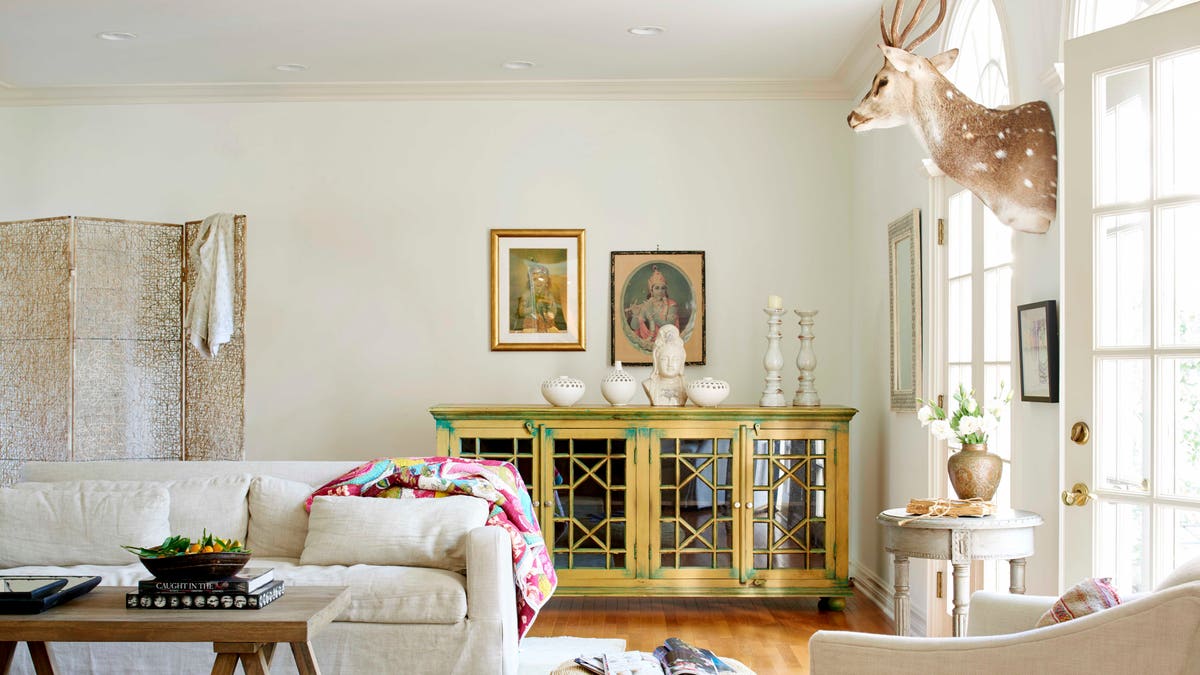
(Furniture With a Soul)
To give the illusion of having higher ceilings and a larger room, look for furniture that is lower to the ground. Most couches are 18-19 inches from the floor to the cushion top, but you can find them as low as 14-15 inches. – Brian Pickler, President of Nadeau - Furniture with a Soul
5. Do the math pre-lighting.

(iStock)
Before you select a chandelier, measure the width of the room. Once you have this number, multiply it by two and convert it to inches to get the minimum diameter your chandelier should be. Also, sconces should be hung at approximately 66 inches from the floor. You want them high, but if they are any higher they will create ghoulish shadows. – NYC-based designer Alexa Hampton
6. When it comes to rugs, go big or go home.

(www.furniturechoice.co.uk)
When it comes to rugs, don't go smaller to save money. You want your furniture's front legs, if not all of them, to be on the rug. In dining areas, it should be large enough that chairs can easily slide out and still be on the rug. If your rug is too small to allow your pieces to sit on it, remove it. It is better to go without than to have a rug that is too small! – Liz Toombs, President of Polka Dots & Rosebuds Interiors
7. It's all about the swatch.

(ATGStores.com)
When selecting paint color, it's hard to tell what a hue will look like from the tiny swatch in the paint deck. Most paint manufacturers offer larger sheets of the color to designers or architects if you ask for them. If you create an online account they will often ship them to you for free. Try Benjamin Moore's website to order 8-inch square color sheets – Long Island-based interior designer Marlaina Teich. (When you are finally ready to paint, paint a couple of larger swatches on your wall in different places and leave them there for at least 24 hours to see how the natural light affects the colors throughout the day. – Allen Construction)
8. Pick your paint last.

green sofa in green room with lamp (iStock)
As tempting as it is to pick the paint color first, it should be one of the last elements of the design process. The color on the walls is what ties all the other elements together making a cohesive statement. If your favorite color is red or something bold, try incorporating it through furniture and accessories. Using a neutral color on walls can also give you more future flexibility in your design. – Karen Gray-Plaisted of Design Solutions KGP (When you are finally ready to paint, paint a couple of larger swatches on your wall in different places and leave them there for at least 24 hours to see how the natural light affects the colors throughout the day. – Allen Construction)
9. Think diagonal and mix with dark.
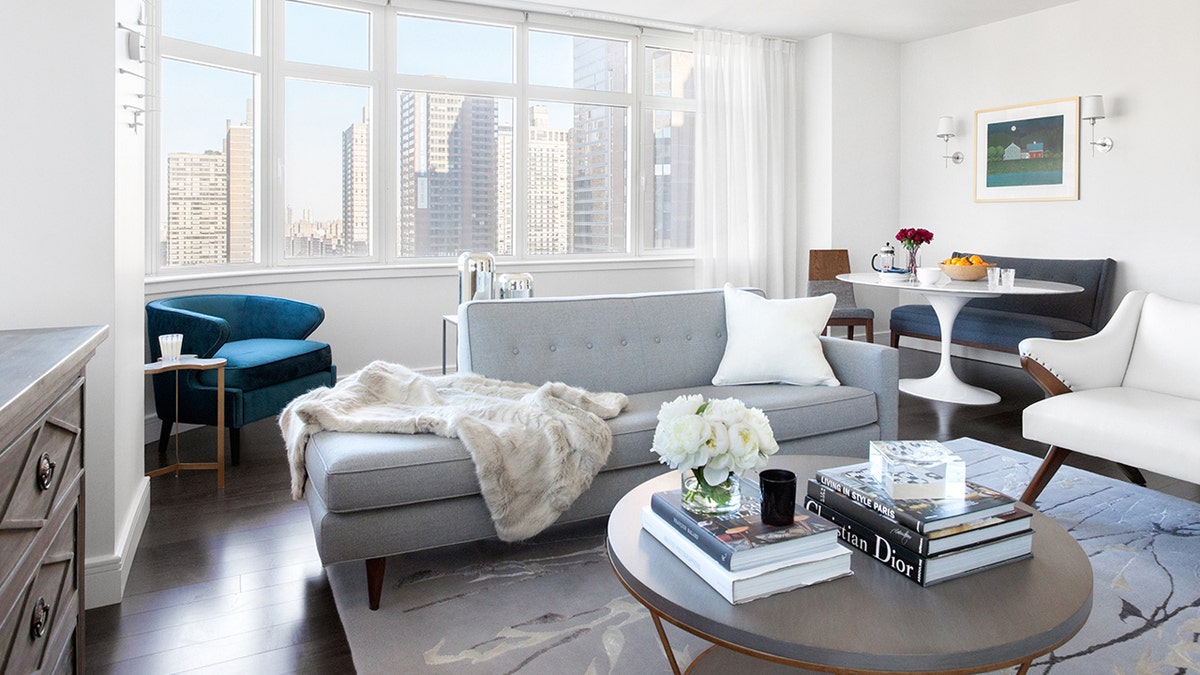
(Decor Aid)
To make a room feel much bigger, lay your wooden floor diagonally. Also, a dark, shiny floor teamed with white walls will make a room feel much brighter than a light colored floor with dark walls. This is because darker hues bounce light more effectively. – Rebecca Snowden, interior style advisor at Furniture Choice
10. Stage a room in vignettes.
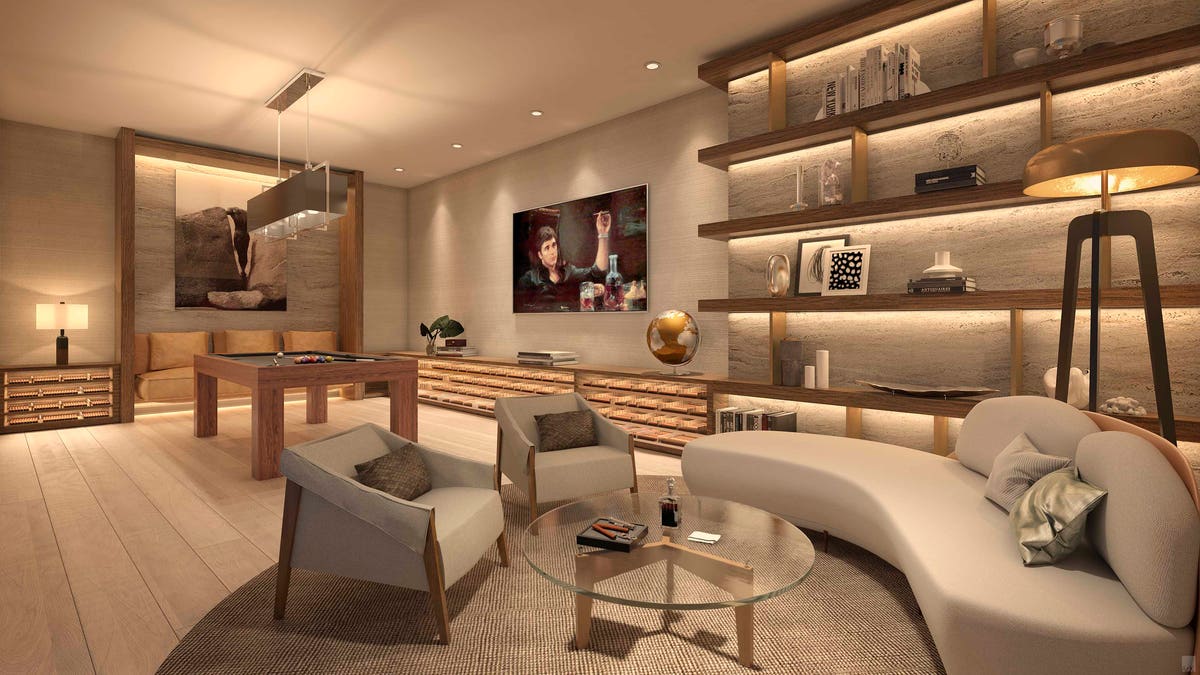
(Auberge Beach Residences Fort Lauderdale)
Instead of starting with one key piece and building around it, start with three distinct pieces you like. For an office, it could be a chair, a desk and a lamp. Then, envision three different scenarios (vignettes) you can create with these pieces. This helps prevent you from tunnel vision—focusing on one item— and allows you to see the bigger picture and ultimately, have more creativity and versatility. – Will Meyer, Meyer Davis Studio